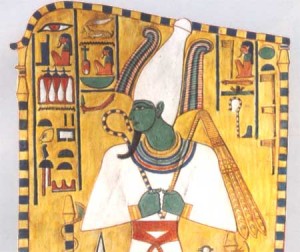Campbell explores the theory that important myths from around the world that have survived for thousands of years all share a fundamental structure, which Campbell called the monomyth.
This fundamental structure contains a number of stages, which include:
First, the hero is often born in mysterious circumstances, or undergoes a serious life challenge early on. Very often, the hero has certain  exceptionalities such as super human strength, insight, wisdom, skill, etc.
exceptionalities such as super human strength, insight, wisdom, skill, etc.
STAGES
(1) a call to adventure, which the hero has to accept or decline,
(2) a road of trials, regarding which the hero succeeds or fails,
(3) achieving the goal or “boon,” which often results in important self-knowledge,
(4) a return to the ordinary world, again as to which the hero can succeed or fail, and finally,
(5) application of the boon in which what the hero has gained can be used to improve the world.
In a well-known quote from the introduction to the book The Hero with a Thousand Faces, Campbell wrote:
“ A hero ventures forth from the world of common day into a region of supernatural wonder: fabulous forces are there encountered and a decisive victory is won: the hero comes back from this mysterious adventure with the power to bestow boons on his fellow man.[1]”
The classic examples of the monomyth relied upon by Campbell and other scholars include the Buddha, Moses, and Christ stories, although Campbell cites many other classic myths from many cultures which rely upon this basic structure.
This pattern of the hero’s journey influences artists and intellectuals worldwide, suggesting a basic usefulness for Campbell’s insights not tied to academic categories and mid-20th century forms of analysis.
Fundamental structure of the monomyth
In the monomyth, the hero starts in the ordinary world, and receives a call to enter an unusual world of strange powers and events. If the hero accepts the call to enter this strange world, the hero must face tasks and trials, and may have to face these trials alone, or may have assistance. At its most intense, the hero must survive a severe challenge, often with help earned along the journey. If the hero survives, the hero may achieve a great gift or “boon.” The hero must then decide whether to return to the ordinary world with this boon. If the hero does decide to return, the hero often faces challenges on the return journey. If the hero is successful in returning, the boon or gift may be used to improve the world. The stories of Osiris, Prometheus, Moses, Buddha, and Christ, for example, follow this structure very closely.
Campbell describes a number of stages or steps along this journey. Very few myths contain all of these stages — some myths contain many of the stages, while others contain only a few; some myths may have as a focus only one of the stages, while other myths may deal with the stages in a somewhat different order. These stages may be organized in a number of ways, including division into three sections: Departure (sometimes called Separation), Initiation and Return. “Departure” deals with the hero venturing forth on the quest; “Initiation” deals with the hero’s various adventures along the way; and “Return” deals with the hero’s return home with knowledge and powers acquired on the journey. (source: Campbell, Hero With A Thousand Faces, & Wikipedia)
